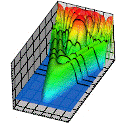Department of Physics and Astronomy: Publications and Other Research

Anthony F. Starace Publications
Document Type
Article
Date of this Version
2-7-2018
Citation
PHYSICAL REVIEW A 97, 022702 (2018)
DOI: 10.1103/PhysRevA.97.022702
Abstract
Owing to its ability to provide unique information on electron dynamics, time-resolved electron momentum spectroscopy (EMS) is used to study theoretically a laser-driven electronic motion in atoms. Specifically, a chirped laser pulse is used to adiabatically transfer the populations of lithium atoms from the ground state to the first excited state. During this process, impact ionization near the Bethe ridge by time-delayed ultrashort, high-energy electron pulses is used to image the instantaneous momentum density of this electronic population transfer. Simulations with 100 fs and 1 fs pulse durations demonstrate the capability of EMS to image the time-varying momentum density, including its change of symmetry as the population transfer progresses. Moreover, the spectra corresponding to different pulse durations reveal different kinds of electronic motion.We discuss how to properly interpret these time-resolved EMS spectra, which represent a generalization of time-independent EMS.
Included in
Atomic, Molecular and Optical Physics Commons, Elementary Particles and Fields and String Theory Commons, Optics Commons, Plasma and Beam Physics Commons


Comments
©2018 American Physical Society. Used by permission.